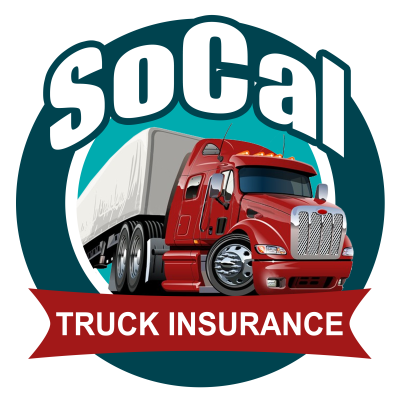
Key Takeaways:
Re-shopping commercial truck insurance means comparing truck insurance quotes from multiple insurance providers before your truck insurance renewal. Rather than auto-renewing with your current carrier, you actively request quotes from competing insurance agents to evaluate insurance premiums, coverage limits, and policy terms. This commercial insurance review process lets you identify truck policy savings by leveraging competition in the insurance market.
Commercial auto insurance costs have exploded—reaching $0.102 per mile in 2024, a 47% increase from 2014 (ATRI, July 2025). The insurance market shifts constantly due to market trends like nuclear verdicts and carrier exits. Small fleets pay more than three times per mile what large fleets pay (ATRI, February 2022). Without regular policy review, Small Business Owners miss opportunities to reduce insurance premiums through better coverage types or newer discounts.
Re-shopping delivers measurable benefits: lower insurance costs (fleets implementing multiple discounts save 25-40% vs. baseline premiums), improved coverage limits matching your current operations, better claims process with responsive insurance agents, and access to specialized insurance policies for your specific risk landscape. Business Insurance experts recommend reviewing commercial insurance annually—even if rates seem stable—because insurance providers adjust pricing models quarterly and market conditions change rapidly.
When should truckers start re-shopping their commercial truck insurance? Start your insurance review 90 days before your truck insurance renewal if premiums increase more than 10% above market rates, or immediately when you experience service failures, operations changes, or claims history shifts.
At Socal Truck Insurance, we've identified five critical triggers that signal it's time for a commercial insurance review: material premiumThe amount paid by the insured to the insurance company in exchange for insurance coverage, typicall... hikes exceeding market trends, poor service from insurance providers, business operations changes affecting coverage limits, multiple claims impacting your risk profile, and safety improvements that qualify you for lower insurance costs. Recognizing these signs early—and acting on them—protects your insurance coverage while maximizing truck policy savings in today's volatile insurance market.
Yes—if your insurance premiums jumped more than 10% at renewal while the insurance market shows only 5.8% year-over-year increases (Q1 2025, ATRI), you're overpaying. Compare truck insurance quotes immediately. Commercial auto insurance rate hikes vary wildly by insurance providers: 2024 saw 3.0% average increases (slowest since 2020), but 2023 spiked 12.5% (ATRI). When your carrier's increase exceeds industry benchmarks by 4-5 percentage points, they're either re-tiering your risk or pushing you toward cancellationTermination of an insurance policy before its renewal date, which can be initiated by either the ins....
At Socal Truck Insurance, we track insurance market trends across carriers. The Council of Insurance Agents & Brokers reported 9.8% commercial property/casualty increases in Q1 2025—broader than trucking-specific data. If your renewal notice shows 15%+ increases, it's likely a non-renewal disguised as pricing. Don't accept inflated insurance costs without a commercial insurance review from competing insurance agents who specialize in commercial vehicleAny type of motor vehicle used for transporting goods or passengers for compensation, subject to var... insurance.
Business operations changes void your existing insurance coverage assumptions and require immediate policy review. Adding new routes—especially in high-risk states like California, Texas, or Florida—triggers 15-30% premium increases due to nuclear verdict exposureThe extent to which the truck is at risk of encountering an insurable incident while not under dispa... in those jurisdictions. Switching commodities (adding hazmatHazardous materials as classified by the government. Freight brokers dealing with hazmat shipments m..., high-value cargo, or refrigerated goods) changes your liability coverage requirements: federal minimums jump from $750K to $1M-$5M for hazmat per 49 CFR § 387.9. Policy terms mandate you notify insurance providers within 30 days of operational changes—failure to disclose voids coverage.
Insurance providers now cross-check ELD data against stated operating radius (FreightWaves, May 2025). If you declared local (0-50 miles) but ELD shows regional (200+ miles), expect audits or cancellations. At Socal Truck Insurance, we've seen carriers save 15%+ by aligning stated radius with actual ELD-verified operations—especially when switching from OTR (500+ miles) to regional hauls. Your insurance agent should review your risk landscape annually, but operations shifts require immediate action to maintain proper insurance policies.
The commercial insurance market transforms rapidly—waiting 3+ years between policy reviews costs you money. Since your last truck insurance renewal, insurance providers have launched new discount programs. Your current insurance agent may not proactively inform you about these truck policy savings opportunities—especially if they profit from your status quo.
Technology adoption accelerated dramatically: 92% of carriers implemented new safety tech in 3 years, with 56% deploying 3+ technologies (ATRI, February 2022). Dashcam acceptance became standard—AI-based coaching is now required for preferred programs as of 2025. If you installed telematicsTechnology used to monitor vehicle movement, speed, and driver behavior, increasingly used by insure..., dual-facing cameras, or collision avoidance systems but never requested premium credits, you're subsidizing carriers who didn't invest in safety. Digital platforms and online quotes now provide instant insurance coverage comparisons—market transparency benefits proactive Small Business Owners who compare truck insurance quotes regularly.
Market conditions shifted: average truck age fell to 3.4 years in 2024 (from 3.8 years in 2023) as fleets replaced aging equipment (ATRI, July 2025). Insurance providers adjusted underwritingThe process by which insurers evaluate the risk of insuring a particular employer or job class based... for newer fleets with embedded insurance technology. Company market share changed as carriers entered or exited trucking—waiting years between reviews means missing new insurance market entrants with competitive rates for your specific risk profile. At Socal Truck Insurance, we recommend biennial reviews minimum, annual reviews for optimal insurance costs management.
Service failures signal deeper problems with your insurance policies and justify immediate action to switch truck insurance carriers. If certificate of insurance (COI)A document used to provide proof of insurance coverages and limits on an insurance policy. requests take over 48 hours regularly—when the industry standard is 24-48 hours and best carriers offer same-day digital access—your insurance agent is understaffed or disorganized. Claims process delays exceeding 90 days (industry benchmark: 45-60 days; best-in-class: under 30-45 days) indicate poor claim adjusterAn insurance professional who assesses vehicle damage, determines repair costs, and negotiates settl... responsiveness or underfunded claims departments. These aren't minor inconveniences—COI delays cause load rejections and lost revenue; extended claims cycles prolong downtime and hurt cash flowThe total amount of money being transferred into and out of a business, especially affecting its liq....
Poor communication compounds the problem: insurance agents taking over 24 hours to return calls, missing truck insurance renewal notifications until 30 days before expiration (too late to compare truck insurance quotes effectively), or failing to address CSA BASIC changes show a lack of Risk ManagementThe process of identifying, assessing, and controlling threats to an organization's capital and earn... Consulting value. At Socal Truck Insurance, we track customer satisfaction ratings through claims history outcomes—subrogationThe right for an insurer to pursue a third party that caused an insurance loss to the insured. recoveryThe amount recovered by an insurance company from a third party responsible for causing damage to th... rates of 30-40% (vs. industry average 15-25%) demonstrate aggressive advocacy. When your insurance provider doesn't fight for recoveries or explain coverage denials with specific policy language, you're paying insurance premiums without receiving proportional claims process support.
Yes—a clean claims history dramatically improves your insurance market position and warrants immediate commercial insurance review. Insurance providers reward 3-5 years claim-free tenure with 5-10% loss-free credits, and some insurtechThe use of technology innovations designed to squeeze out savings and efficiency from the current in... carriers like Cover Whale offer up to 30% renewal discounts for safe drivers using telematics (Geotab, August 2024). Your current insurance agent won't automatically reduce insurance premiums when your risk profile improves—you must request a re-rating or compare truck insurance quotes to capture these truck policy savings. Financial strength ratings (AM BEST) and underwriting algorithms price policies on trailing claims history, but carriers rarely proactively lower rates without competitive pressure.
Safety improvements beyond claims-free records compound savings: clean MVR + PSP scores avoid the 15-50% surcharges that violations trigger. Maintaining CSA BASIC percentiles below 50 (ideally under 40) in categories like Unsafe Driving and Crash Indicator qualifies you for preferred tier pricing. Documented fleet safetySafety measures and policies specifically designed to prevent accidents and ensure the safe operatio... programs with DVIR compliance >98% and quarterly safety meetings earn 5-15% "Risk Management" discounts that most Small Business Owners never request. At Socal Truck Insurance, we've seen carriers implementing 5+ discount categories achieve 25-40% total savings versus baseline commercial auto insurance premiums—combining loss-free credits (5-10%), driver trainingPrograms designed to educate and improve the skills of drivers, focusing on safe driving techniques,... programs like PTDI or Smith System (3-10%), telematics with preferred vendors (5-12%+), multi-policy bundling of Business Insurance lines (5-15%), and pay-in-full discounts (2-5%).
Credit score improvements matter equally: fleets with excellent credit pay 20-40% less than those with poor credit, yet carriers won't re-rate automatically when your score increases 50+ points over 12 months. Workers' compensation insurance experience mods improving to below 1.0, equipment upgrades to newer trucks (average age 3.4 years in 2024 vs. 3.8 years in 2023 per ATRI), and technology installations like ADAS systems (saving 6% documented) or dashcams (5-10% discounts per TrackNet) all justify re-shopping. Insurance costs for commercial trucks represent $0.102 per mile—on a fleet running 500,000 annual miles, even a 10% reduction saves $5,100/year. When your risk landscape improves but insurance premiums don't reflect it, you're subsidizing higher-risk carriers in your insurance provider's book.
Start 90 days before truck insurance renewal to compare truck insurance quotes from 5+ insurance providers. At Socal Truck Insurance, we access standard markets and specialized MGAs for comprehensive coverageProtects against damages to a truck from non-collision-related incidents such as theft, fire, vandal.... Effective re-shopping requires documentation: 5-year loss runs, driver MVRs, equipment schedules, and current policy declarationsPart of an insurance policy that specifies who is insured, what risks or property are covered, the p.... Insurance agents need complete data—partial information yields inflated quotes.
Evaluate beyond insurance premiums: assess claims process reputation, financial strength ratings (AM BEST A-rated minimum), certificate of insurance turnaround, and Risk Management Consulting services. Carriers implementing 5+ discount categories achieve 25-40% total savings: telematics (5-12%+), dashcams (5-10%), ADAS (5-8%), driver training (3-10%), multi-policy bundling (5-15%), loss-free credits (5-10%). Request written discount confirmation when you switch truck insurance carriers.
If you've identified any of these five signs—premium hikes exceeding 10% above market rates, service failures, operations changes, multiple claims, or safety improvements—start your commercial insurance review immediately. Request your 5-year loss runs, current policy declarations, driver MVRs, and equipment schedules within 48 hours. Contact 3-5 insurance agents to compare truck insurance quotes, beginning 90 days before truck insurance renewal for optimal leverageThe use of borrowed capital to increase the potential return of an investment, which also increases .... Don't wait until 30 days before expiration—rushed shopping limits your ability to switch truck insurance carriers effectively and costs you truck policy savings. With commercial auto insurance at $0.102 per mile and small fleets paying 3x more than large fleets, even a 10% reduction saves $5,000+ annually on typical operations.
At Socal Truck Insurance, we specialize in commercial insurance review for trucking operations navigating today's complex insurance market. Our insurance agents access 5+ standard carriers plus specialized MGAs to find optimal insurance coverage at competitive insurance premiums—not just the lowest price, but the best claims process, certificate of insurance turnaround, and Risk Management Consulting support. We help Small Business Owners implement 5+ discount categories to achieve 25-40% total savings through telematics, safety programs, and multi-policy Business Insurance bundling.
Contact Socal Truck Insurance today for a no-obligation policy review and discover how much you're overpaying. Call us or request online quotes through our digital platforms—we'll compare insurance providers and deliver comprehensive proposals within 72 hours, ensuring you maximize truck policy savings before your next renewal.
